Models of Sociality, Art, Information and Culture (MOSAIC)
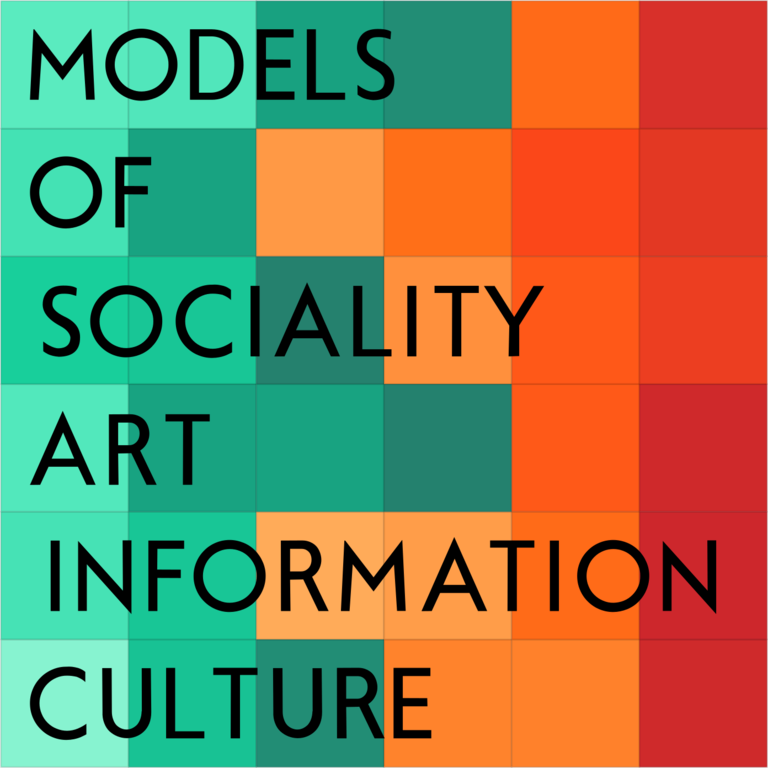
The Models of Sociality, Art, Information and Culture (MOSAIC) group uses the concepts and tools of evolutionary ecology to study the origins and patterning of behavioral diversity in a variety of cultural contexts. Our work includes mathematical modeling, statistical analysis of large-scale historical and contemporary demographic datasets, social network analysis, and software development for creating and managing databases of culture. We also provide logistical support for managing longitudinal field data streams within the department.
Members: Bret Beheim, Ph.D. (principal investigator), Silke Atmaca, Ph.D. (department data coordinator), Riana Minocher, Ph.D. (postdoc, fm. doctoral candidate), Oleg Sobchuk, Ph.D. (postdoc), Natalia Fedorova (doctoral candidate), Claudia Bavero (Staff Support)
Former: Daniel Redhead, Ph.D. (postdoc, 2018-2020), Ngoc-Han Tran (Ph.D. 2022), Anja Becker (M.Sc. 2019), Leonie Ette (M.A. 2019)
Group Research Sites: Ulaanbaatar, Mongolia (Fedorova), Tsimane, Bolivia (Beheim & Becker), Andaman and Nicobar Islands (Minocher), Hokkaido, Japan (Beheim), Mayangna, Nicaragua (Ette)
Student Assistants: Anastassiya Bublikova, Anne Büchner, Anne Hellmund, Antje Winkler, Carlotta Rück, Constanze Wiedemann, Enzo Lima, Franziska Meier, Karin Kämmerling, Klara Unger, Kristina Kunze, Maria Fröhlich, Nikkin Devaraju, Philine Adolphi, Rodrigo Lopez, Vincent Kiepsch, Vivien Kleinow
Work Since 2020
Three recent projects in our group focused on the state of research reliability in evolutionary anthropology: a large-scale survey of reproducibility in evolutionary anthropology (Minocher, et al. 2021), a targeted conceptual replication of work on sexual conflict in spousal age gaps (Minocher & Ross 2022, in concert with the STRAND group), and a reanalysis of the historical timing of the emergence of moralizing gods in world history from secondary data (Beheim, et al. 2021). We utilized large-scale longitudinal datasets to assess the basic patterns of mobility through the life course (Fedorova, et al. 2022), how labor networks differ in structure between production systems (Kraft, et al. 2022), and how market-based economic shifts affect respiratory health (Jaeggi, et al. 2021) and brain volume senescence (Kaplan, et al. in press). In a high-resolution cross-sectional field database of material art, Tran, et al. (2021a) and (2021b) focus on the signaling and cultural group roles of the kolam tradition in South India. Becker’s 2021 M.Sc. thesis modeled the enzymatic reaction curves in breath-hydrogen lactose tests from four HBEC research sites, and Ette’s 2021 M.A. thesis quantified the demographic patterns of recent increases in Spanish bilingualism at the Mayangna site.
Ongoing and Future Projects
Within the MOSAIC group, software and methods to maintain and curate field datasets for the department is continually under development. We are collaborating with the Sanguatsiniq project group on quantifying the carbon impact of Inuit foraging alternatives (lead: Elspeth Ready) and patterns of patch choice among arctic harvesting and hunting (lead: Freddy Hillemann). We are developing mathematical models of the evolution of sharing norms under uncertainty (lead: Natalia Fedorova) and, with HBEC collaborator Adrian Bell, extending models of the relationship between cultural diversity and coordination norms in structured populations (lead: Bret Beheim). Our group is also continuing analysis of artistic datasets, focusing on evolutionary models of the emergence of “canonical” bodies of cultural knowledge across multiple domains (lead: Oleg Sobchuk). With the Tsimane Health and Life History Project, we are studying the network diffusion of SARS-COV-2 (lead: Tom Kraft), gasoline motors (lead: Bret Beheim) and assessing the extent to which recent proliferations in bilingualism among forager-horticulturalists map onto social learning dynamics and gross demographic differences in fertility and survival (lead: Riana Minocher). This last project won “Best Student Talk” at the Cultural Evolution Society Conference in 2021.
Recent Research Projects
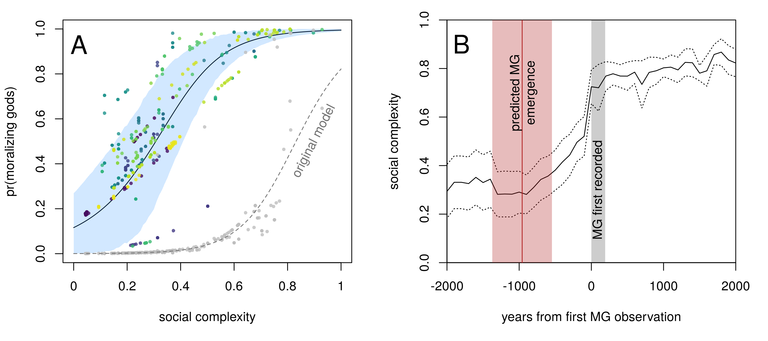
Do moralizing religions precede complex societies in world history?
- Beheim, B., et al. (2021) Treatment of missing data determined conclusions regarding moralizing gods. Nature, 595, pp. E29–E34.
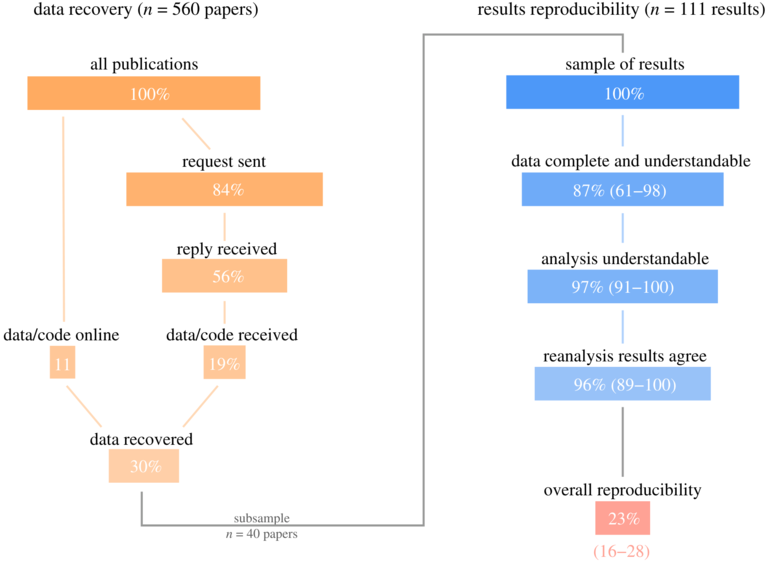
A key question in evolutionary study of religion is the timing and causes of the appearance of moralizing supernatural beliefs in the historical record. The so-called Megasociety Threshold Hypothesis posits that beliefs such as karma and moralistic divine punishment only appear after societies reach population sizes of one million or greater, contrasting with theories that moralistic religions may have had a causal role in organizing such large polities. Focusing on the possible forward biases introduced by nature of the historical record, Beheim, et al. (2021) re-analyzed the Seshat database used to advance this thesis with probabilistic methods designed to anticipate uncertainty in the historical record, concluded that the apparent threshold was instead a consequence of the missingness patterns within the data, which were strongly associated with population size via factors such as literacy. This project has led to a productive sequence of responses on this topic and major changes in the way that large-scale historical databases treat the topic of missingness and data taphonomics.
How reproducible is research in evolutionary anthropology?
- Minocher, R., Atmaca, S., Bavero, C., McElreath, R., & Beheim, B. (2021) Estimating the reproducibility of social learning research published between 1955 and 2018. Royal Society Open Science, 8:210450.
- Minocher, R., Ross, C.T. Spousal age-gaps, partner preferences, and consequences for well-being in four Colombian communities. (2022) Evolution and Human Behavior, 43:5.
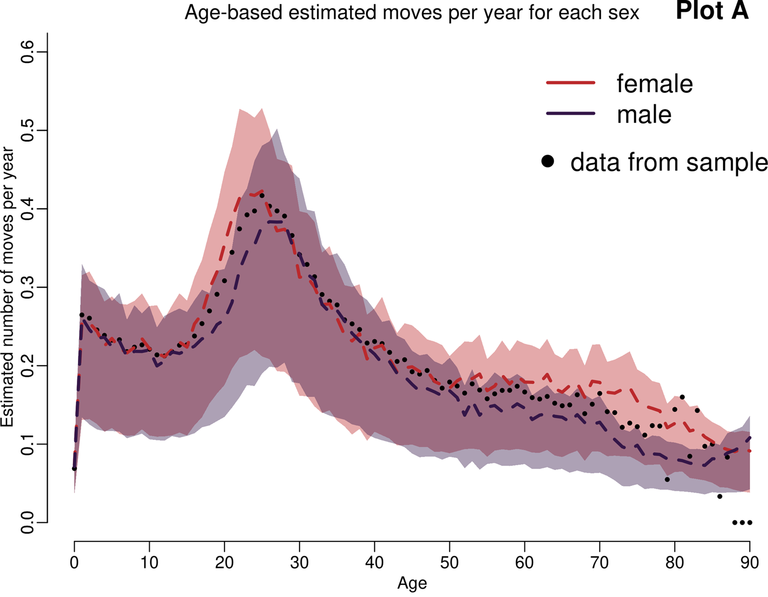
Reproducibility is integral to science, yet recent research across the biological and behavioral sciences has estimated low rates of data availability and results reproducibility. In Minocher, et al. (2021), we surveyed 560 empirical publications, published between 1955 and 2018 in the social learning literature, a research topic that spans animal behavior, behavioral ecology, cultural evolution and evolutionary psychology. We found that data was recoverable online or through direct data requests for 30% of this sample, but chances of recovery decline exponentially with time since publication, halving roughly every 6-9 years. When data for a publication can be recovered, we estimate a high probability of subsequent data usability (87%), analytical clarity (97%) and agreement of published results with reproduced findings (96%). This corresponds to an overall rate of recovering data and reproducing results of 23%, largely driven by the unavailability or incompleteness of data. The first study of its kind in evolutionary anthropology, our project adds to efforts to improve the reproducibility of research on the ecology and evolution of social behavior. Since publication, a sister project has begun at MPI-EVA in the Department of Comparative Cultural Psychology’s EVApeCognition study (leads: Sonja Ebel and Alex Sánchez Amaro).
One of the major findings of Minocher, et al. (2021) is that the “half-life” of social learning data is only about 6-9 years. However, this measure is limited by the cross-sectional nature of our design. Our initial survey in 2018 came during the rapid adoption of open-science practices within the social and life sciences, so it is reasonable to hope that a similar study conducted in 2023 would see a much slower rate of decay in the availability of empirical datasets. To that end, our group will design and implement a follow-up survey in the next two years which will allow an accurate estimate of the longitudinal rate of data decay.
Besides reproducibility, another dimension of research reliability is the extent to which results replicate from site to site and across populations and contexts. In Minocher & Ross (2022), we attempted a conceptual replication of published findings in Tanzania showing limited sexual conflict among spouses with a large age gap, using HBEC data collected by the STRAND group in four communities in Colombia. Cross-culturally, a large age gap is correlated with low economic empowerment of women, but this work shows how age gaps may not always be a useful indicator of women's well-being within any particular community nor reflect a lack of women's autonomy. Minocher's work demonstrates how replication efforts may succeed in field anthropology, while highlighting the importance of the cultural context within which behavioral practices with potentially negative consequences are situated, especially individual-level resource control.
Are the mobility patterns of industrializing and subsistence populations distinct?
- Fedorova, N., McElreath, R., Beheim, B. (2022) The complex life course of mobility: Quantitative description of 300,000 residential moves in 1850-1950 Netherlands. Evolutionary Human Sciences, 4, E39.
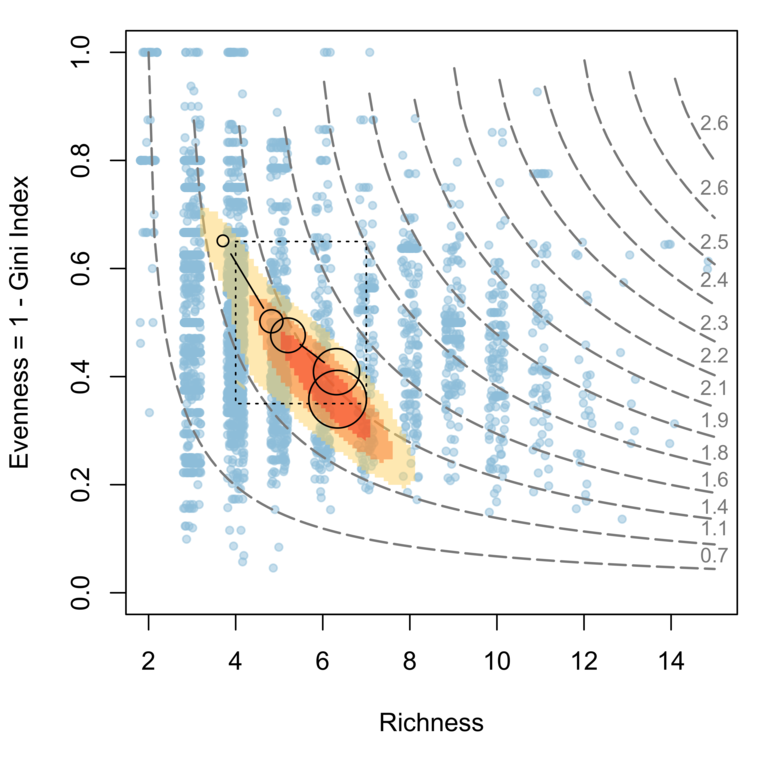
Mobility is a major mechanism of human adaptation, both in the deep past and in the present. Decades of research in the human evolutionary sciences have elucidated how much, how and when individuals and groups move in response to their ecology, but focused mostly on small-scale subsistence foraging and horticulturalist societies rather than ‘sedentary’ agricultural and commercial ones. In Fedorova, McElreath, Beheim (2022), we describe a high-resolution picture of residential mobility over the life course using longitudinal census records from the Netherlands. This publicly-available dataset documents roughly 1 million census registration events across 36,595 individuals between 1850 and 1950. We observe a clear peak in mobility for both men and women in early adulthood (age 20–30), and a variegated pattern of mobility over the lifecourse. Overall, we find mobility rates in an industrializing society to be both relatively high, and relatively variable, shedding light on individual mobility regimes in a “sedentary” population.
Does material culture show evidence of information tradeoffs and ethnic marking?
- Tran, N.H., Waring, T., Atmaca, S., Beheim, B. (2021) Entropy trade-offs in artistic design: A case study of Tamil kolam. Evolutionary Human Sciences, 3(E23).
- Tran, N.H., Kucharský, S., Waring, T., Atmaca, S., Beheim, B. (2021) Limited scope for group coordination for stylistic variations in kolam art. Frontiers in Psychology, 12:4770.
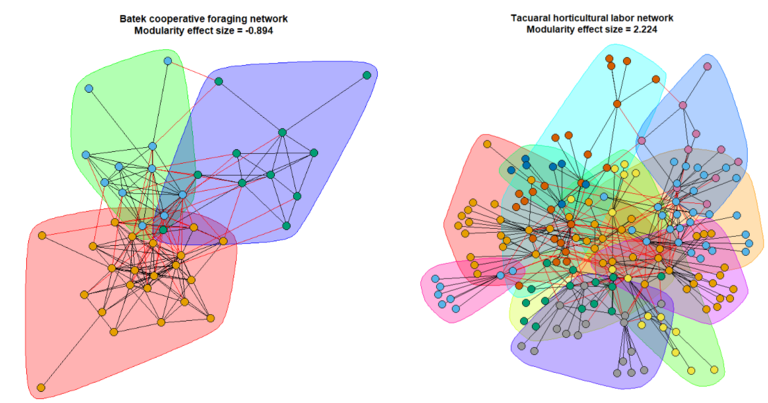
Evolutionary approaches to art generally focus on its potential role in social signaling, and in facilitating group coordination. In large, complex societies, assorting with others with similar social norms or behaviors can facilitate successful coordination and cooperation. Distinctive styles or patterns of artistic design could signify migration history, different groups with a shared interaction history due to spatial proximity, as well as individual-level expertise and preferences. In Tran, et al. (2021a), we analyze a large corpus of an artistic tradition called kolam that is produced by women from Tamil Nadu in South India (N = 3,139 kolam drawings from 192 women) to test whether stylistic variations in art can be mapped onto distinct social caste, region and neighborhoods. We find that stylistic variations or patterns in art are dominated by artist-level variation and artist expertise, with little attributable to systematic differences between groups. In Tran, et al. (2021b), we find that kolam art tends to occupy a ‘sweet spot’ of artistic complexity, as measured by Shannon information entropy, consistent with evolutionary signaling theories of constrained optimisation.
This work won “Best Short Live Talk“ at Culture Conference 2021
Comparing Female Cooperative Labor Networks in Hunter-Gatherers and Horticulturalists
- Kraft, T.S., Cummings, D., Venkataraman, V., Alami, S., Beheim, B., Hooper, P. Seabright, E., Trumble, B., Stieglitz, J., Kaplan, H., Endicott, K.L., Endicott, K.M., Gurven, M. Female cooperative labor networks in hunter-gatherers and horticulturalistsPhilosophical Transactions of the Royal Society B 378:20210431
Cooperation in food acquisition is a hallmark of the human species. Given that costs and benefits of cooperation vary among production regimes and work activities, the transition from hunting-and-gathering to agriculture is likely to have reshaped the structure of cooperative subsistence networks. Hunter–gatherers often forage in groups and are generally more interdependent and experience higher short-term food acquisition risk than horticulturalists, suggesting that cooperative labor should be more widespread and frequent for hunter–gatherers. In Kraft, et al. (2022), we compare female cooperative labor networks of Batek hunter–gatherers of Peninsular Malaysia with a similar database from Tsimane forager–horticulturalists of Bolivia prepared by MOSAIC. We find that Batek foraging results in high daily variation in labor partnerships, facilitating frequent cooperation in diffuse networks comprised of kin and non-kin. By contrast, Tsimane horticulture involves more restricted giving and receiving of labor, confined mostly to spouses and primary or distant kin. Tsimane women also interact with few individuals in the context of hunting/fishing activities and forage mainly with spouses and primary kin. These differences give rise to camp- or village-level networks that are more modular (have more substructure when partitioned) among Tsimane horticulturalists. Our findings suggest that subsistence activities shape the formation and extent of female social networks, particularly with respect to connections with other women and non-kin. We discuss the implications of restricted female labor networks in the context of gender relations, power dynamics and the adoption of farming in humans.
Ongoing and Future Projects
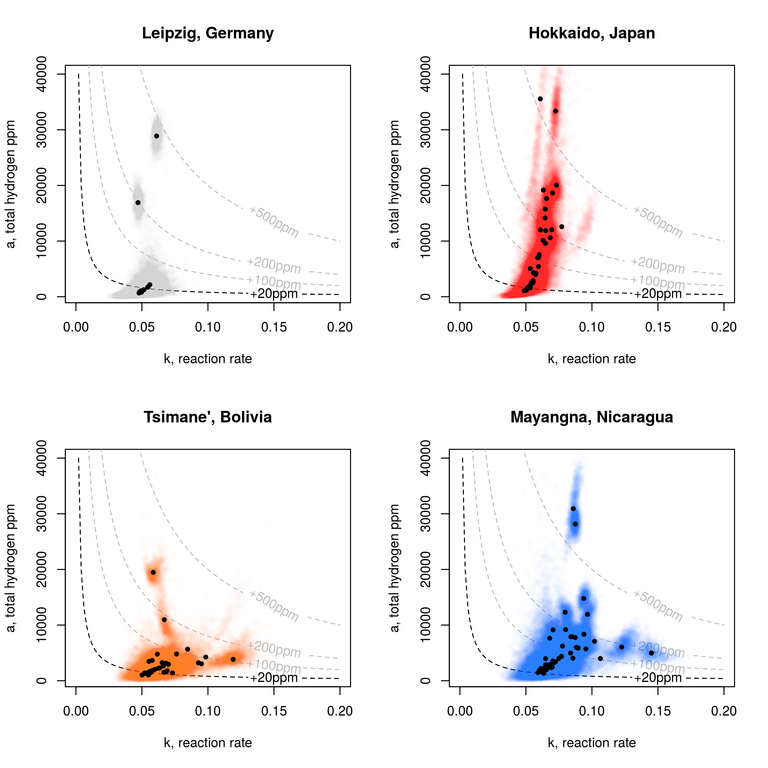
Cross-cultural measures of Lactose Intolerance and Adult Lactase Persistence in the Nutritional Transition
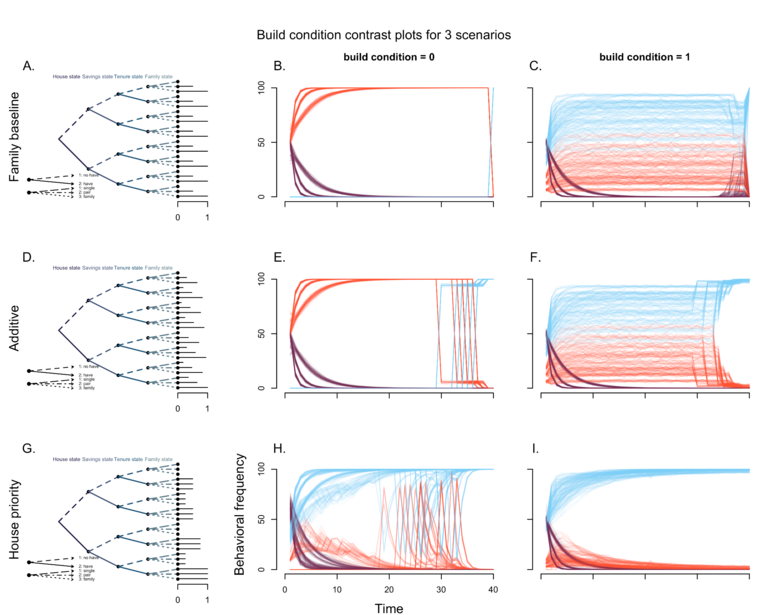
MOSAIC group member Anja Becker submitted a Masters thesis on breath-hydrogen test results from four department sites to study the facultative effects of market dairy access on adult lactose persistence, from data collected by Bret Beheim and MOSAIC masters student Leonie Ette at four HBEC research sites: Hokkaido, Japan; Mayangna, Nicaragua; Tsimane, Bolivia and Leipzig, Germany. With Bret Beheim, this project involved fitting a mathematical model of the reaction dynamics to the production of H2 within the large intestine, as a primary diagnosis of lactose malabsorption. This analysis is the first to date to measure the intensity of lactose intolerance within individuals, and is currently being prepared for publication.
Demographic and psychological models of artistic canonization
Art, literature, music, film, and scientific research have all been characterized as having a “canon” – a rather small set of most significant works. These works seem to have particular properties: for example, they are not only perceived as “better” or “more important” than other works, but they also tend to persist for unusually long periods of time (one might say that canonical works are “immortal”). This raises several questions: How long-lasting are canonical works, actually? What are the causes behind canonisation? Is canonisation meritocratic or is there an element of stochasticity to it? While canons seem to be a universal property of human cultures, we do not yet have definitive answers to these questions. Important research in the humanities (including computational humanities) and network science has improved our understanding of canons and cultural success at large, but the cultural-evolutionary perspective can become an important missing component that might help finding the answers to these questions. MOSAIC postdoc Oleg Sobchuk, who has experience with studying the mechanics of success in the arts (Morin & Sobchuk 2020; Sobchuk & Tinits 2020), is leading an analysis of cultural-evolutionary theories of canonization. Our goal is to develop a general causal understanding of the canon, and to assess the extent to which canonization is affected by idiosyncratic and stochastic effects. We will develop statistical models of canonisation and will test them using large datasets, such as the digital collections of literature, paintings, scientific papers, games, and the like. Also, we intend to critically assess the possible “taphonomic” biases that such datasets may contain – and whether these biases can emerge as a result of the canonisation process itself. Related recent work:
- Morin O, Sobchuk O (2021), The shortlist effect: Nestedness contributions as a tool to explain cultural success, Evolutionary Human Sciences, 3: e51.
- Sobchuk O, Tinits P (2020), Cultural attraction in film evolution: The case of anachronies, Journal of Cognition and Culture, 20(3-4): 218–237.
The effect of demographic structure on the rate of acculturation
Using longitudinal THLHP records on reproduction and mortality, we are currently studying the extent to which indigenous language shifts towards Spanish in the face of rapid market integration are driven by demographic disparities between speakers and non-speakers (lead: Riana Minocher), measured as differences in age-specific fertility, in inter-birth intervals, in mortality, and systematic trends in parent-offspring language transmission. This project won Best Student Presentation at the Cultural Evolution Society Conference in 2021. We are also participating on a similar analysis led by the Comparative Behavioral Ecology group (lead author Arianna Dalzero) studying the demographic details of cross-cousin marriage among the Tsimane using the life history dataset curated by MOSAIC.
Settlement strategy: Trade-offs between building, moving, and saving
As part of her doctoral research Natalia Fedorova has been working on a optimality model of housing investment. In order to improve our understanding of human-environment interactions, it is necessary to know when households choose to invest in their dwellings, particularly when capital can be directed in other directions. Investments in housing have implications for mobility and future portfolio decisions, building up the constructed landscape we live in. However, they have rarely been the focus of modeling or empirical work in evolutionary anthropology.
Using stochastic dynamic programming, which allows us to track optimal strategies over time, NF has modeled the trade-offs between investing in housing, moving, and saving. NF has also conducted fieldwork in the ger districts of Ulaanbaatar, the capital of Mongolia. The ger districts provide an excellent case study for housing investments as they are areas of the city where households predominantly build their own housing, and crucially, do so in two distinct forms. Households build gers, circular felt dwellings that are mobile, and bashins, western-style houses built of brick, wood, and other industrially produced materials. The optimality model is used to analyze and understand the situation in Ulaanbaatar, with approximate bayesian computation being used in this generative inference framework to interface model and data. The manuscript is currently in preparation.
Sharing networks in uncertainty
Together with collaborator Alejandro Perez Velilla, who is currently a visitor in the Sanguatsiniq group in HBEC, MOSAIC doctoral candidate Natalia Fedorova is working on building an analysis to extend a mathematical model of sharing norms under conditions of risk and uncertainty to data from various fieldsites represented in the department. Velilla has derived a mathematical model exploring how sharing norms and networks develop in relation to risk and uncertainty. Extending mathematical models to data requires care, and the attentive construction and operationalization of variables. Our work will proceed in two streams, a bayesian analysis using the mathematical model to formulate the likelihood, but also an analysis in the generative inference framework, using the mathematical model to generate data which is then interfaced with data using approximate bayesian computation. This double-pronged approach allows us also to detangle the effects of dynamic and demographic processes from those of risk.
Spatial network dynamics of SARS-COV-2 disease transmission in a horticulturalist metapopulation
Using the spatial and social network data in the THLHP database curated by MOSAIC, collaborator Thomas Kraft is leading a computational analysis to assess the vulnerability of such populations and the viability of interventions such as voluntary collective isolation. We simulate and analyze the dynamics of SARS-CoV-2 infection among Amazonian forager- horticulturalists using a stochastic network metapopulation model parameterized with high- resolution empirical data on population structure, mobility, and contact networks. Preliminary comparisons of model predictions to empirical COVID-19 outcomes measured via seroassay suggest that our theoretical model is reasonably successful at predicting outbreak severity at both the population- and community-levels.